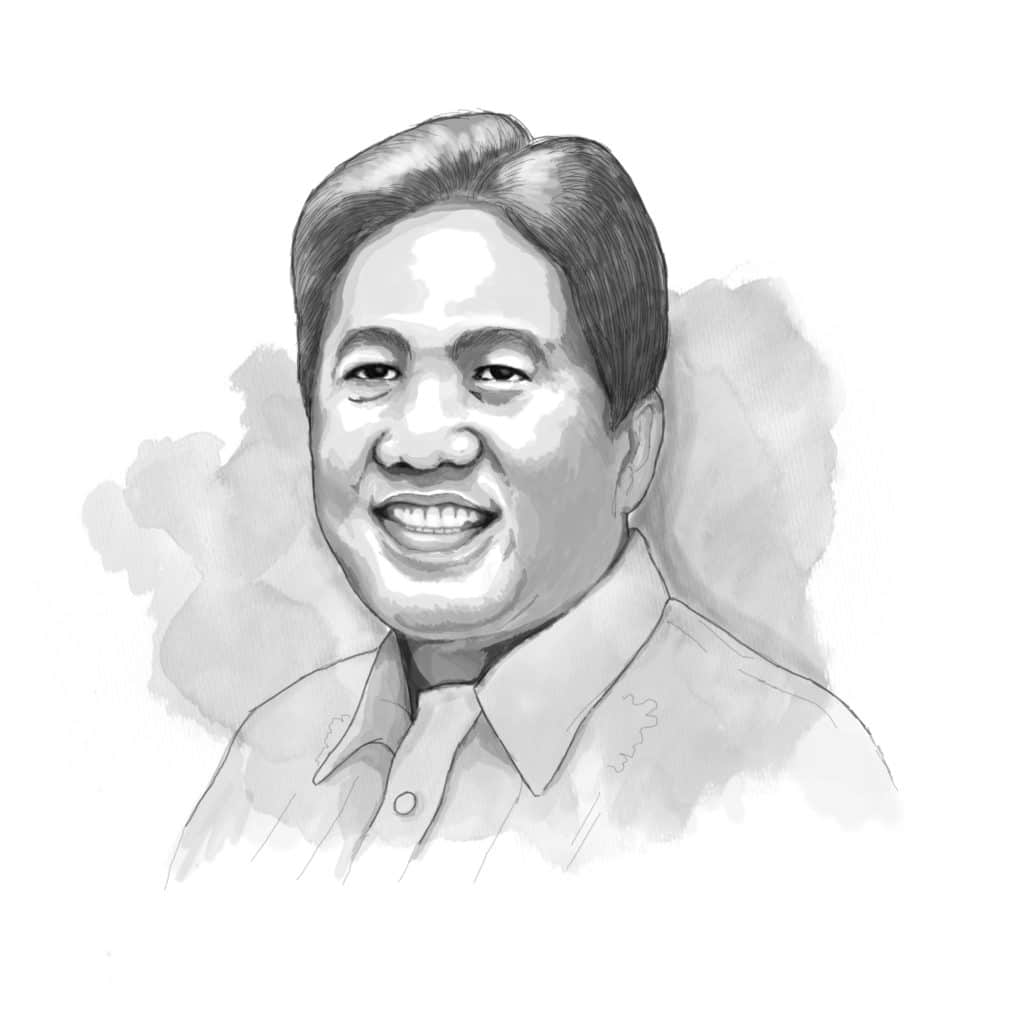ENDEAVOR

In July 2022, seven months after Typhoon Odette inflicted severe damage and destruction on scenic Siargao – an island composed of nine municipalities in Surigao del Norte province, that is often dubbed by tourists as the Surfing Capital of the Philippines – Corazon Tecson Jimenez, or Coratec, a development manager, began a personal mission to find out what needs to be done in terms of assisting the people to recover and rebuild their lives. She recalls:
“It was meant to be an immersion mission for a month. I had to do a contemplative mission for me to decide if I will proceed with our projects on nutrition, health, and education with focus on the children. I tried to meet and introduced myself to as many stakeholders of the town – the LGU, the church, the NGOs, the teachers, the children. I thought of gathering the children together with their mothers and the workers from the Child Development Centers before I departed Burgos. It was a happy day. We ate, we played in the grounds of Sta. Ana Parish Church. We also marched to the sea to lessen their trauma after typhoon Odette.”
Two months later, Coratec decided to proceed with the projects. She organized community building activities like a coastal clean-up and beach volleyball, her way of “warming up with the students, the teachers, the police, and others who participated.” She conducted a bridging leadership seminar for teachers, noting that “acceptance by the locals of our presence was validated.”
Coratec vowed to personally involve herself in helping rebuild Siargao, starting with Burgos, the poorest municipality in the entire island. A rapid area assessment was done to determine the people’s needs. Burgos is populated by less than 5,000 people and only 1,200 households. Odette damaged all the structures in Burgos.
She recalls: “It was devastating to see a poor town devoid of access to most opportunities. The services offered by the government are wanting – either delayed or none at all.” I left my comfort zone in Manila to stay in Siargao for months so I can do more. I knew in my heart that this mission is a God-given opportunity for me to serve and give hope to the people of Burgos. Partnerships were established, the AIM alumni were happy to contribute, individual donors were tapped. I know that a good cause will always elicit the support of generous souls who are willing to participate in a worthy endeavor of putting smiles back on afflicted people's faces. ”
How have Coratec and her team fared in their rebuilding efforts in Burgos, Siargao?
Three major projects have been initiated and are ongoing.
First, the CAPE or capacity building project for health and nutrition governance. This is being supported by the Zuellig Family Foundation led by former DAR Secretary and AIM Professor Ernie Garilao.
Second, the ILNO or Improve Learning and Nutrition Outcomes project. The objective is to improve the level of knowledge and nutritional health of 250 daycare children using ECCD and DOH-NNC standards and indicators. The Early Childhood Care and Development (ECCD) System refers to the full range of health, nutrition, early education and social services programs that provide for the basic holistic needs of young children from birth to age six. It was established by Republic Act 8980, promulgating a comprehensive policy and a funded national system.
Third, the Burgos Karunungan Center (BKC) project, establishing a community learning hub for children and adults. Coratec’s team partnered with TESDA for the technical training on carpentry, ably supported by the Rotary Club of Surigao del Norte and DOLE’s Tupad Program. Another training program on electrical skills was held, with the assistance of Rotary International District 3860.
By the end of 12 months, they targeted being able to achieve the following goals: first, eight Child Development Centers (CDC) rehabilitated and compliant with ECCD standards; second, 250 students enrolled and provided with appropriate lessons and nutritious food; third, 200 home gardens established; fourth, 200 parents/guardians trained on parenting, meal planning and preparation, safe food handling and food production; fifth, eight Child Development Workers (CDW) trained on cutting edge early childhood curriculum, teaching methods and tools; and sixth, enactment of an appropriate LGU ordinance supporting a fully-functional barangay-led CDC.
Last Jan. 25-26, Coratec and her team conducted a two-day training program to enhance the competencies of the participants in developing, managing and sustaining the CDC ecosystem in their barangays. The training was in partnership with Philippine Nation Building, Inc. (PNBI) headed by Mr. Oscar F. Picazo, a former senior economist of the World Bank.
Since inception, Coratec and her team have enlisted the support of some 30 partners and private donors. By the first week of July, they are looking forward to the inauguration of all eight CDCs in six barangays. By end November, they project being able to endorse all completed projects to the Burgos LGU and barangays.
“There were so many other challenges on our part in impressing to the locals the importance of education in the early stages of the children's development,” Coratec points out. In retrospect, she recalls: “I never knew about Siargao Island until typhoon Odette struck the area on Dec. 16, 2021. Quite a number of my friends ask why our AAAIM Ahon Siargao team chose Siargao, once described as a geographically isolated and disadvantaged area. My reply was an emphatic ‘Why not?’”
During the Aquino administration, Coratec served as Metro Manila Development Authority (MMDA) General Manager, with then Chairman (now Senator) Francis Tolentino, from 2010 to 2016, applying the knowledge and skills she had gained from earning a Master in Development Management (MDM) at the Asian Institute of Management.
Summing up her Siargao experience, she reflects: “Development work is not an easy task. Challenges in my case abound especially because my background was in business. My studies at AIM in development management proved to be of help in seeking solutions to improve communities by creating strategies, managing expectations and operationalizing the project cycle.”